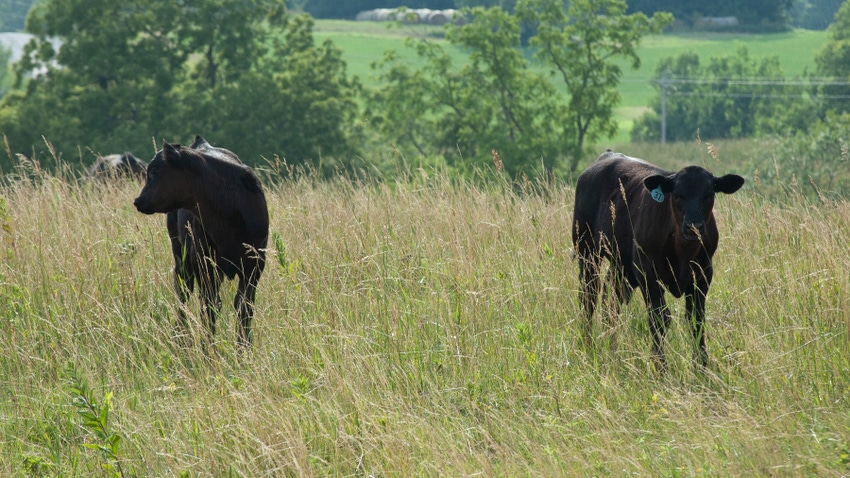January 26, 2024

At a Glance
- Observations that USDA Market News reporters provide on subtle market trends can give beef producers a marketing edge.
- Broadly defined, market information includes all data and analysis used by market participants to make decisions.
- USDA Market News reports provide factual information about prices and quantities.
USDA Market News reporters use specific lingo to describe action — or lack of action — in cattle markets. Those narratives are preludes to hard data on cattle markets.
Non-market participants might construe the abundance of data as information overload. But market participants gain valuable insight on potential price action from information that Market News, part of USDA’s Agricultural Marketing Service, publishes in cattle market reports.
The information is available to all market participants. Equal access helps level the playing field for buyers and sellers.
The introductory text in many USDA Market News cattle reports describe market conditions on receipts and supply or offerings, trends, demand, and trade activity. Narratives include price ranges to indicate where the bulk of trade occurred.
Reviewing the vernacular can help even veteran market participants better understand Market News reports. Reporters use terms like “mostly,” “bulk” and “majority” to indicate where most sales occurred. An “undertone” is the sense of direction in an unsettled market. For example, it was stated in the Iowa Weekly Cattle Auction Summary report for Dec. 17-23 that “Feeder steers and heifers sold on a light test, though a lower undertone was noted.”
‘Receipts, and supply or offerings’
A report lists the number of cattle sold. For direct trade, that’s confirmed head counts or sales. For auctions, its receipts, or the number of cattle covered in the report. Reporters describe supply or offerings as “light,” “moderate” or “heavy.” Those terms are relative to the typical volume for that market.
Reporters sometimes use the phrase “light test,” which means too few cattle are being sold to give reporters a solid feel for price direction.
Meaning behind ‘trend’
A “trend” describes how the current price differs from the last market period price when a sufficient volume was available for comparison. The latter is sometimes referred to as the “last established market.” Reporters consider quality of the cattle when describing trends. Sales outside the normal price range usually have little impact on the formulated trend.
Terms used to describe price trends are “steady,” “firm” and “weak.” “Firm” is when prices are tending higher but not measurably so. “Steady” is when prices are unchanged from the previous period. “Weak” is when prices are tending lower but not measurably so.
When the terms “higher” or “lower” are used, the specific amount of the price advance or decline is stated. “Higher” is when the majority of sales are at prices measurably higher than the previous period. “Lower” is when prices for most sales are measurably lower.
What’s up with ‘demand’?
“Demand” is the desire to possess cattle coupled with the willingness and ability to pay for them. Demand may be described as “very good,” “good,” “moderate,” “light” or “very light” in relation to what is considered typical or normal demand at each market for the period. Seasonality is taken into consideration. The meanings behind each type of demand follow:
Very good demand means offerings or supplies are rapidly absorbed.
Good demand is firm confidence on the part of buyers that general market conditions are good.
Moderate demand is an average buyer interest and trading.
Light demand is a below-average interest and trading.
Very light demand means few buyers are interested in trading.
Reporters recognize that good demand might exist for certain grades, weights or classes of cattle, while at the same time, others are in light demand. Indicated shifts in the needs of buyers could well foretell a changing market.
For example, the following was a quote in the SJ_LS850, National Feed & Stocker Cattle Summary for the week ending Jan. 6: “Buyers continue to want cattle that have had vaccination and weaning programs. Some buyers now have orders for calves that are required to have a 60-day weaning period, up from the typical 45-day period that was standard not that long ago.”
Demand should not be confused with market, or trade, activity. An active trade at firm to higher prices for light supplies does not necessarily imply a better demand than existed in the previous period for larger supplies. Neither does a slow trade at weak-to-lower prices on heavy supplies mean a light demand, since the price level may be influenced by an increase in quantity supplied rather than by contraction of demand.
Trade activity
Reporters may not mention trade activity if the market shows no change in action, or the pace of trading, from normal activity.
Aggressiveness of buyers in seeking supplies, attitude of sellers toward marketing or holding supplies, and other cues can indicate the level of trade activity. The terms “active,” “moderate,” “slow” and “inactive” are used to indicate how available supplies or offerings are clearing the market. Inactive trade is when sales are intermittent with few buyers or sellers.
The USDA Agricultural Marketing Service’s Livestock, Poultry and Grain General Market News Terms website provides a complete listing of terminology and definitions and the Market Reporter’s Handbook provides detailed explanations of Market News Reports and procedures.
About the Author(s)
You May Also Like






